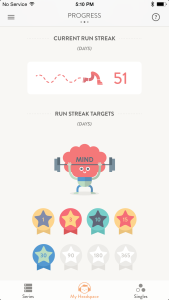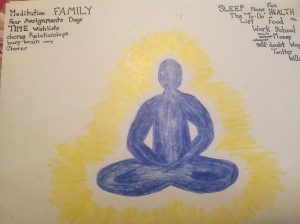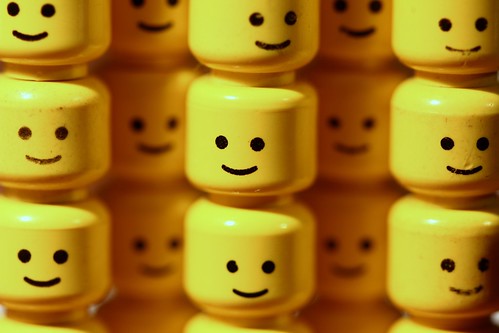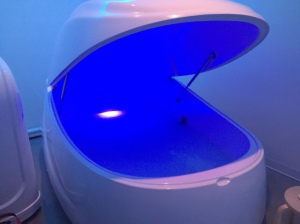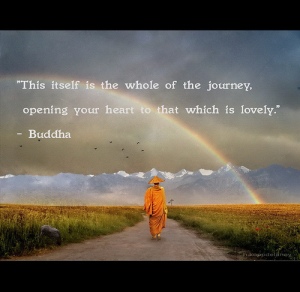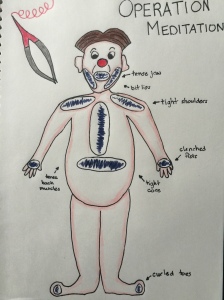Although I have put in the required hours, my learning project is not complete. I have learned a lot, but I am not done. I have learned:
- Meditation may have medical benefits for people who make it a regular practice, including rewiring the brain, better resilience for stress, immune support, emotional wellness, and improvements in sleep
- It’s not easy. Meditation is work. Every time. Making time to practice it daily was difficult, and the little voice in your head gets louder if you have a large “to do” list
- The focus is important – whether it is visualization or focusing on breathing, giving your attention a clear task is the route to training your mind.
- There are many types of meditation to try. Some are based in theological rituals, others are based on physical practices, and others are based on mindfulness
- I did not have success with my original goal: improved sleep. However, I noticed that I had less headaches, I was better at self-calming, and I began to personalize less of my challenges
- For my best learning, I need a blend of online, self-selected content, books to read, and human contact to check in and seek answers to questions
- Reflecting openly about my new interest has increased my connections and PLN – reflecting regularly has increased my support network and also kept me engaged in my learning
- Journaling helped me to process my personal learning experiences and growing knowledge base to transition into my more public thinking out loud blog
- A meditation “space” was less important than I thought. I tried meditating in my bedroom, my front porch, in the woods overlooking the beach, as a passenger in the car, while cooking, and even at work
- I like my new mindfulness! This part is simpler than I thought. I connect with my senses to ground myself in the present. I smell Spring in the air while walking the dogs, I hear my dogs lolloping around me, and I see the diffusion of light as I move through my day
- There was one component of my chosen app Headspace that I did not have a chance to fully utilize and I believe that it would have added even more of a dynamic experience, based on my time as part of our #tiefit group: the ability to connect with other Headspace buddies. You can encourage each other and cheer one another towards daily practice. I never did find another Headspace partner. That is ok, as it took me 7 months to accept my first FitBit buddy. So, in terms of connecting with other Headspace users, it may still happen over time.
- The way that the app is gamified (it tracks your “streaks”,
there are incentives for reaching certain milestones, and your progress is represented in multiple ways) encourages you to compete against yourself and ensures that you keep returning.
- It is actually less about doing a little “something for yourself”, and more about considering the people who will benefit from your ongoing practice of meditation. Focusing more on the benefits that your work will provide to others will make the practice easier, your mind softer and more malleable to the process. Meditation should be done as an act of service, not solely as a treat for yourself. However, your increased calm and self-understanding may lead you to be less critical of yourself and others.
- Some days are better than others. At first that was difficult and when I re-read my journal I can see how critical I was of my efforts. Now, I realize that it is about the practice. Learning a sport is similar: you attend practices and some days are better than others, but ATTENDING the practice still counts.
- I have begun to practice some of the strategies and reminders as a new part of my daily ritual. Headspace teaches you to “flash” some of the teachings as often as 5 times a day to ground you in the moment. I have taken some of the lessons to help me ease into sleep on restless nights, or visualize my busy thought traffic as a road that I step further and further away from. I am in the process of owning this new learning!
So, my journey continues. I have paid for a year’s use of this app, I am enjoying the practice, and I feel like I am getting something out of it. I am learning the skills to be more in the moment and to be present in whatever task I am attempting to do. It is actually feeding my sense of gratitude and joy. The guided meditations are working for me, but I hope to try a few more guided mindfulness activities on the move.
Thank you Alec Couros for giving me the opportunity to learn something new and to explore new ways to bring balance into my life. And thank you to my expanded PLN for supporting me along the way with resources, ideas and encouragement.


